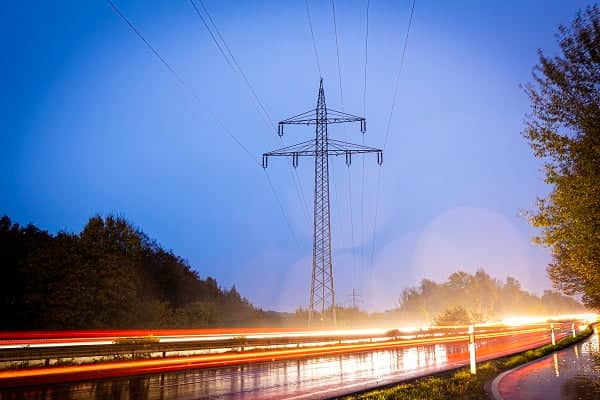Running a successful business comes with its own set of challenges, and managing operational costs is at the top of the list for many companies. Energy bills, in particular, can account for a significant portion of a business’s overall expenditure. Whether you’re a small startup or a large corporation, reducing energy costs can have a big impact on your bottom line. Fortunately, there are a few practical steps you can take to lower these expenses without compromising on efficiency or comfort. Here are four tips to help you cut down on energy costs for your business.
1. Carry out a comprehensive energy audit
The first step in reducing energy costs is understanding exactly how much energy your business consumes, and more importantly, where that energy is going. A professional energy audit can provide detailed insights into your business’s energy usage patterns and highlight areas where improvements can be made. It will allow you to pinpoint inefficiencies, such as outdated equipment, unnecessary energy consumption during off-hours, or poorly insulated areas that cause energy wastage.
Many energy suppliers offer audits for free, but there are also independent energy consultancy firms that can provide a more in-depth analysis. By identifying where most of your energy is going, you can then create a targeted plan to reduce waste. You might discover, for example, that installing energy-efficient lighting, upgrading HVAC systems, or simply adjusting the thermostat by a degree or two could significantly reduce your energy bills.
Additionally, an energy audit can help you make more informed decisions when considering switching energy providers.
2. Invest in energy-efficient equipment
Another effective way to reduce energy costs is by upgrading to energy-efficient equipment. While there may be an upfront cost involved, investing in modern, energy-efficient appliances, machinery, and systems can provide long-term savings on your energy bills. Many businesses overlook the fact that older equipment can be a massive drain on energy resources. Modern appliances are designed to be more efficient, consuming less energy for the same or even better output.
For example, if your business uses air conditioning or heating, replacing older units with modern, energy-efficient models can drastically cut energy consumption. The same goes for refrigeration, office equipment like computers and printers, and manufacturing machinery. Energy-efficient alternatives may also qualify for tax incentives or rebates in some regions, further reducing the cost of investment.
When purchasing new equipment, look for appliances with high energy ratings, such as those certified by the Energy Saving Trust. These ratings ensure that the device you’re purchasing meets strict energy efficiency guidelines. Over time, the savings from reduced energy use will outweigh the initial costs of upgrading equipment.
3. Optimise lighting systems
Lighting is a crucial aspect of any business, but it’s also one of the areas where energy is most commonly wasted. Many businesses leave lights on unnecessarily or rely on inefficient lighting solutions that drive up energy bills. Fortunately, lighting is one of the easiest areas to make improvements in when it comes to energy efficiency.
Switching to LED or energy-saving light bulbs can cut your lighting energy use by up to 80%. LEDs have a much longer lifespan compared to traditional incandescent bulbs, meaning you’ll also save on maintenance and replacement costs. Moreover, installing motion sensors in areas that are not continuously occupied, such as storage rooms, bathrooms, or hallways, can ensure lights are only used when necessary.
Natural light can also be an underused asset in many office settings. Encouraging employees to open blinds or rearranging office space to make the most of daylight can significantly reduce reliance on artificial lighting during work hours.
In some cases, investing in smart lighting systems that allow remote control or automated scheduling can further optimise energy use. These systems allow you to set timers or adjust brightness levels based on occupancy or time of day, ensuring that energy isn’t wasted when it’s not needed.
4. Encourage energy-saving behaviours among staff
Even with energy-efficient systems in place, the behaviour of your staff plays a vital role in managing energy consumption. Raising awareness about energy efficiency and encouraging employees to adopt energy-saving habits can significantly impact your overall energy usage.
Start by educating your team on the importance of energy conservation and how their actions can directly influence the company’s energy bills. Simple things like turning off computers and monitors at the end of the day, unplugging devices that aren’t in use, or adjusting thermostats to reasonable levels can all contribute to lower energy consumption.
You could also introduce an energy-saving policy or hold regular energy-saving workshops to keep the importance of reducing energy usage at the forefront of staff minds. Incentivising good behaviour through rewards or recognition can also motivate employees to contribute to energy-saving efforts.
In addition to behavioural changes, installing systems that support energy efficiency, such as automated power management settings on computers or smart thermostats, can ensure energy isn’t wasted when staff forget to turn things off.
Reducing energy costs doesn’t have to be complicated or require large investments. By following these simple yet effective tips, you can lower your business’s energy consumption, reduce your bills, and create a more sustainable operation.
Start by conducting an energy audit to identify where improvements can be made, invest in energy-efficient equipment, optimise your lighting systems, and foster a culture of energy-saving among your employees. By doing so, you’ll be able to cut costs while also contributing to a greener, more sustainable future.
For more guidance on finding the best energy deals for your business, visit businessenergy.com, a great resource for comparing suppliers and securing the most competitive rates.
By taking these steps, your business can stay ahead of rising energy costs and make smart decisions that benefit both your bottom line and the environment.

